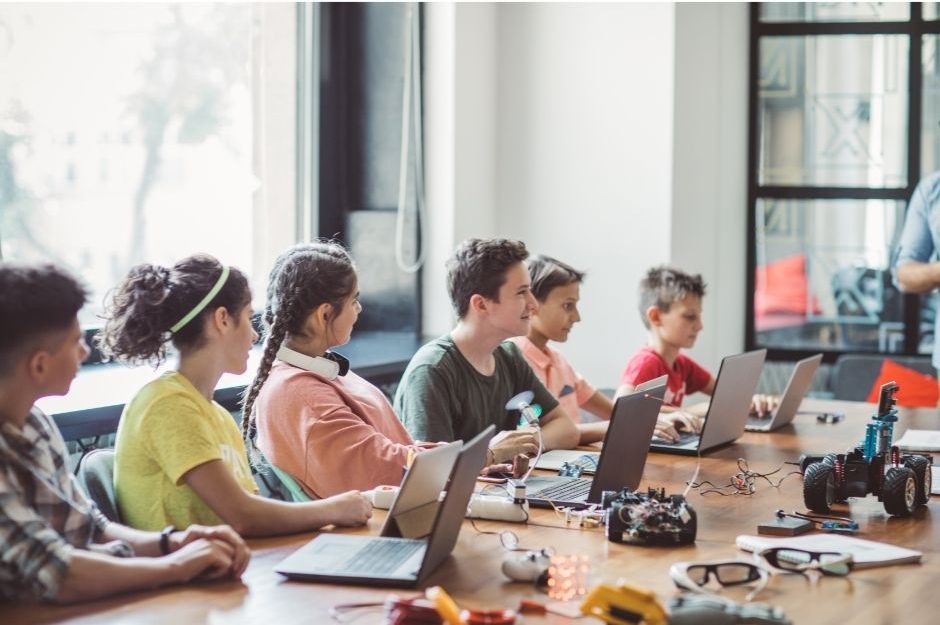
03 Mar Together gamification and education are the keys to learning more
Tell me and I forget, teach me and I may remember, involve me and I learn. – Benjamin Franklin
Gamification and education are the keys to learning more. How much do you remember from your high school classes? Could you still solve a complex multivariate polynomial equation with integer coefficients? How about giving an in-depth presentation on the anatomy of a dissected frog? How about an easy one? What’s the symbol for the Lead on the periodic table?
If you are like the majority of us, the answer is a resounding no. Yet there are a number of seemingly useless things that stay with us over the years. I, for one, couldn’t tell you how a black hole is formed or what led to the fall of the Ming dynasty in the mid-17th century, but if you ever need to know the name of the goldfish on the Cosby show or need someone to recite every word of Survivor’s “Eye of the Tiger,” I’m your gal. So why is it that we remember some facts and not others, and can we retain more of the information that we want by combining gamification and education?
While part of this has to do with rhyme, pattern, and simple repetition (we generally watch shows and listen to songs more than once), repetition is just part of the equation. Memory itself is composed of three storage systems across three networks (encoding, retention, and recall), each playing a different role in the memory-making process. Encoding involves our brain’s ability to convert and process sensory input, while retention is the storage and maintenance of that information, and recall is our brain’s ability to retrieve that information when we need it.
When presented with an external stimulus there are generally four major ways to enhance your brain’s capacity to remember that information. Attention, emotion, repetition, and engagement. When it comes to the first part of forming a memory, attention and engagement are the most important things.
This seems rather obvious, we can’t remember something we never focused on in the first place, right? And yet most of us are put into a learning environment that leaves us passively focused and disengaged. How many of us spent more time in the classroom thinking about lunch or whatever teenage drama was relevant at the time rather than on what we were actually supposed to be learning?
By using both gamification and education, the more engaged and focused you are when presented with an external stimulus the more neurons are stimulated and the more likely you are to remember it. However, remembering that information requires more than just focus.
The learning retention statistics show that we generally only remember about 5% of the information that we are told and yet we remember upwards of 90% of what we learn experientially. Non-interactive learning methods result in an 80-95% loss of information, whereas interactive, engaging, and participatory learning methods result in much larger retention rates.
This is due to the fact that the more our brain and senses are engaged the more neurons are activated and the stronger our neural pathways become. These stronger neural connections not only aid in the process of storing memories but also in the process of recalling the information when we need it.
It is for this reason that gamification and education have become such a popular tools in the learning sector. Gameplay aspects, when integrated into a learning environment, not only drastically enhance individual engagement and participation, leading to higher overall retention rates, but they also neurologically trigger the brain to learn and retain more information.
Gamification and education are the best tools to learn by forging an emotional connection to the activity or information, activating the hippocampus (the area of the brain largely responsible for memory and recall), and triggering the release of ‘feel good’ chemicals like dopamine, serotonin, and endorphins. This combination leads to an all-encompassing, emotionally triggering, activating, and engaging multisensory experience. In other words, a perfect recipe for learning.
This is why numerous studies have found that gamification, when incorporated into the learning environment, leads to enhanced engagement, higher retention rates, lower stress levels, improved performance, and an overall reduction of the effects of cognitive overload.
GoodGames has strategically designed a number of different game-like experiences and tools geared towards learning, engagement, collaboration, and retention. GoodGames has worked with scientists, researchers, and organizational psychologists to optimize our games for the learning and training environment.
We format and stack these game-like experiences to be geared towards training and development, collaboration and discussion, learning and retention, and course optimization. So, whether you are looking to spark discussions in the classroom, enhance participant retention, or optimize your workshops and training, GoodGames can help you achieve these goals! Email us at hello@goodfocus.net to learn more.
